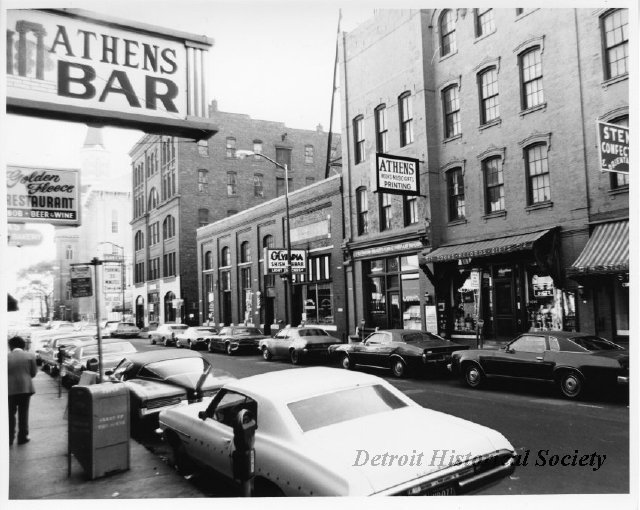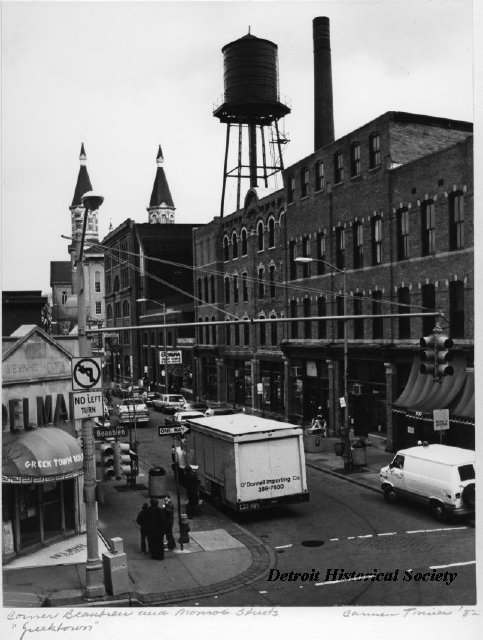The Greektown Historic District, commonly referred to simply as “Greektown,” is a historic neighborhood, commercial district, and entertainment district on Monroe Avenue between Brush and St. Antoine streets. It is dominated by Greek themed décor and restaurants. Greektown was first settled in the 1830s by German immigrants as a primarily residential neighborhood. In the early 1900s, many of the German residents began to move out of the neighborhood, and Greek residents moved in and established businesses. In the 1920s, the Greek residents, like the German residents before them, began to move out of the area, although their businesses, restaurants, and stores, remained. Through the 1950s, a mélange of immigrants moved into the few residences that remained amidst the businesses.
In the early 1960s, Greektown was redeveloped as a more commercialized district with space for both parking and municipal buildings. At that time, many of Detroit’s Greek community and business leaders realized that if they did not intervene, the cultural integrity of the Greektown District could be lost forever. With the help of the mayor’s office, they were able to improve Greektown by installing street lights and improving the streetscape and building exteriors. In order to attract more visitors to the area, they also decided to establish an annual Greek Festival to coincide with the Fourth of July holiday. The first Greek Festival took place in 1965, and by the time the festival ended, Greektown had established itself in Detroit as an attractive commercial and entertainment district.
Today Greektown is the location of one of the three casinos in Detroit, Greektown Casino, along with the casino’s hotel. The casino is built on what in the 1980’s was the site of Trapper’s Alley, a renovated 1850s era building that housed the Ferry Seed Company warehouse, which was adapted for retail and commercial use. The district is also a popular location for food and entertainment. Many of the well-known restaurants along Monroe Avenue in Greektown include: The Golden Fleece, Pegasus Taverna, New Parthenon, and Pizza Papalis. Greektown also has its own People Mover station located on Beaubien Street. The Greektown Historic District also includes St. Mary’s Roman Catholic Church, Second Baptist Church, and the Atheneum Hotel.
The district was listed on the National Register of Historic Places in 1982.

